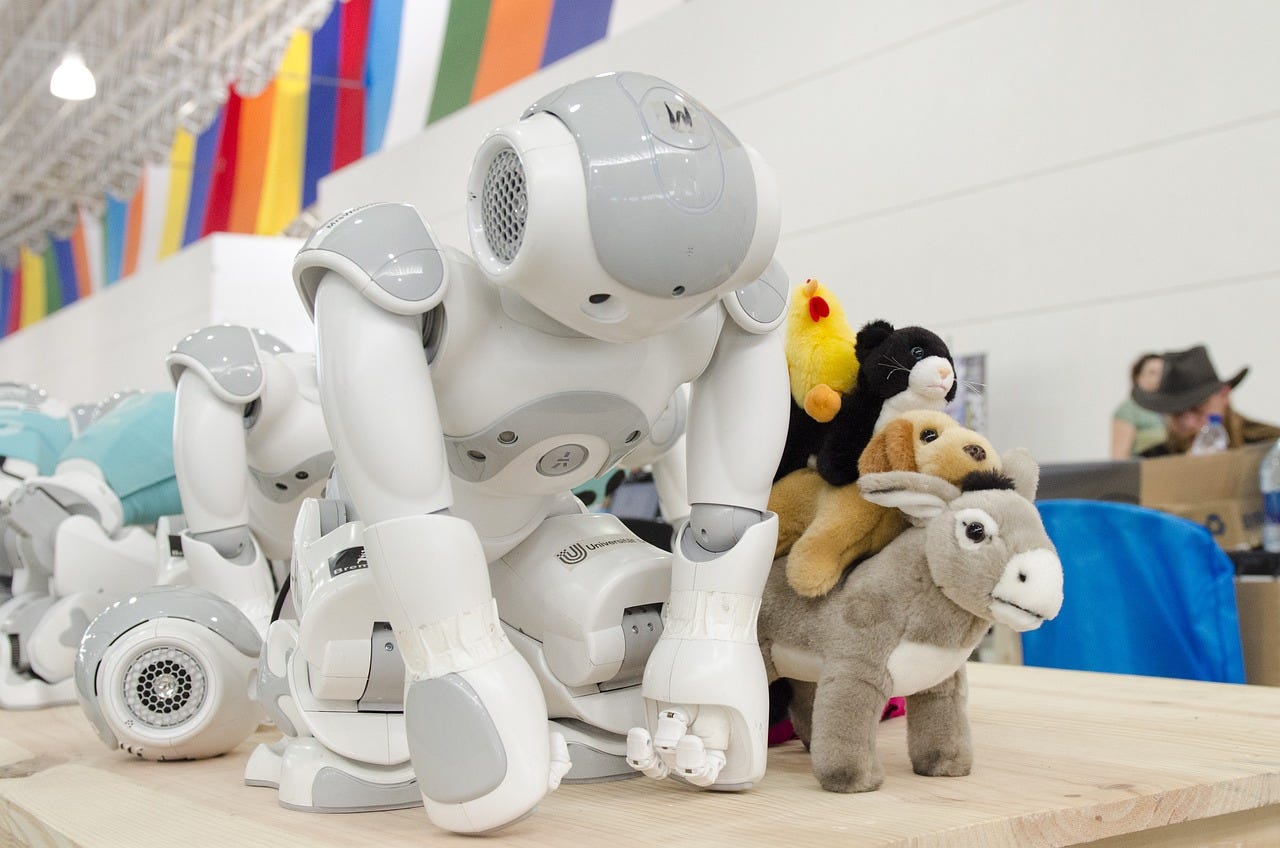Humanoid Robots: China’s New Investment Goldmine
Fresh & Hot curated AI happenings in one snack. Never miss a byte 🍔

This snack byte will take approx 4 minutes to consume.
In the bustling corridors of China's tech hubs, a new wave of innovation is capturing the imagination of investors and engineers alike: humanoid robotics.
Once the realm of science fiction, these mechanical beings are now at the forefront of China's technological ambitions, drawing parallels to the nation's meteoric rise in the electric vehicle (EV) industry.
Recent data showcases a significant surge in investments, with humanoid robot developers securing nearly 2 billion yuan (approximately US$276 million) across 20 deals in the first two months of this year alone. This marks a substantial increase from the 1.2 billion yuan generated from four transactions during the same period last year.
To appreciate the current fervor, it's essential to trace the roots of China's robotics journey. In the early 2000s, industrial robotics in China was in its infancy, with limited adoption and a heavy reliance on foreign manufacturers.
However, strategic initiatives like the "Made in China 2025" plan catalyzed a transformation, aiming to position China as a global leader in high-tech industries, including robotics.
By 2023, China accounted for 51% of global industrial robot installations, deploying 276,288 units that year. This rapid adoption underscores China’s commitment to automation and smart manufacturing.
Fast forward to today, and China's focus has expanded from industrial automation to the development of humanoid robots—machines designed to emulate human movements and, in some cases, behaviors.
A recent research paper by Morgan Stanley highlighted that of the 100 publicly traded companies worldwide involved in humanoid robot development, 56% are based in China. Furthermore, China is home to 45% of the world's integrators—firms that customize robots to match end-user needs—underscoring its dominant position in the global robotics arena.
Several Chinese robotics start-ups have recently made headlines with significant funding announcements:
LimX Dynamics: Founded in 2022, this Shenzhen-based company specializes in humanoid robots capable of lifting heavy loads, ideal for deployment in factories and warehouses. The firm completed a series A+ funding round, raising 500 million yuan, with investors including China Merchants Group, EV maker Nio, and Alibaba Group Holding.
AI2Robotics: Also hailing from Shenzhen, AI2Robotics has secured over 100 million yuan in its latest funding round, attracting institutions like Dunhong Capital and Yunqi Capital. The company boasts a clientele that includes top domestic and international automotive firms and recorded sales worth "tens of millions of yuan" in 2024.
Eyoubot: Originally founded in Wuxi, this start-up focuses on developing and manufacturing robotic joints. After completing a series-A funding round that raised 50 million yuan, Eyoubot announced plans to relocate to an industrial estate in Shanghai. The company expects to ship around 180,000 units this year, a significant increase from the 30,000 units in 2024.
The Chinese government recognizes the potential of humanoid robots to revolutionize various sectors. In a recent work report presented at the annual "two sessions" meetings, the term "embodied intelligence"—referring to the application of artificial intelligence in physical systems like robots—was mentioned for the first time. The state aims to "establish a mechanism for the growth of investment in futuristic industries," with embodied intelligence being a focal point.
Moreover, the Ministry of Industry and Information Technology has set ambitious goals, expecting to establish a domestic ecosystem for humanoid robots by 2025.
The plan includes nurturing two to three world-class companies, fostering specialized small and medium-sized enterprises, and creating industrial development hubs. By 2027, China aims to have a reliable industrial supply chain, integrating robotic products seamlessly into the real economy.
China is set to host the world's first human-robot half-marathon on April 13, 2025, in Beijing's Economic-Technological Development Area, affectionately known as E-Town.
This unique event will feature 12,000 human runners alongside humanoid robots from various global companies. The race aims to showcase advancements in humanoid robotics and stimulate public interest and discussions about robot capabilities. Robots can be remote-controlled, semi-autonomous, or fully autonomous, and will compete based on finishing time and the number of robot changes, with penalties applied for each change. Prizes ranging from 3,000 to 5,000 yuan will be awarded to the top three finishers, with additional categories for robots like best endurance and most popular appearance.
China's innovation in robotics isn't confined to industrial applications. The nation has introduced spherical robots designed to patrol urban areas and enforce law. Developed by Logon Technology, these AI-powered spheres can operate on land and in water, handle rough terrains, and withstand significant impact.
Equipped with non-fatal police equipment like net guns and tear gas sprayers, these robots can patrol, identify, and apprehend suspects using facial recognition software and autonomous systems. This represents a significant step in integrating robotics into law enforcement, aiming to augment and potentially replace human police in dangerous situations.
While the momentum is undeniable, challenges remain. The integration of humanoid robots into the workforce raises questions about job displacement, especially among roles traditionally held by humans.


